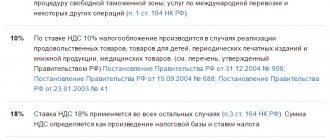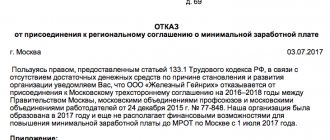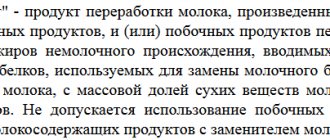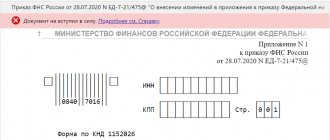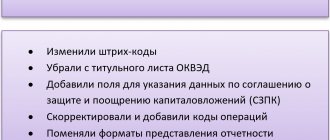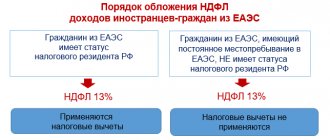On July 3, the lower house of the Russian parliament adopted in the first reading a draft law regulating the increase in VAT from 18 to 20 percent from January 1, 2021.
Earlier, the head of the Ministry of Finance, Anton Siluanov, said that inflation provoked by an increase in VAT will amount to no more than 1.5%. Thus, the growth of inflation, including the predicted 3%, after the increase in VAT will be about 4-4.5%, the head of the Ministry of Finance noted.
Meanwhile, some experts consider this forecast to be too optimistic - an increase in VAT by more than 10% will provoke an increase in prices for food, gasoline, and household goods. According to realist experts, price increases will average 7-10%, and the overall inflation rate next year could reach 15%.
How life will change in the Russian Federation - impact on prices
According to the Prime Minister, it is planned to change the base VAT rate, increasing it from the current 18% to 20%. “To prevent this burden from falling on people, all value added tax benefits for basic socially significant goods and basic services will be preserved,” Medvedev emphasized.
The head of the Russian Ministry of Finance, Anton Siluanov, also spoke about the amendments accompanying such a decision. He reported on the expected reduction from 7 billion to 2 billion rubles of the threshold values of the amounts of taxes paid by an enterprise over three years to speed up VAT refunds, on reducing the burden on VAT payers by reducing the time for conducting desk audits when refunding VAT, as well as on the abolition of a difficult business situation tax on movable property.
VAT rate 20% in 2021
The basic VAT rate, which is levied on the revenue of most organizations, is 20%. In order to understand whether you need to use this rate or not, use a simple rule: rates of 0 or 10% are not suitable - you need to use 20%. But even in this case there are some nuances, since the amount of tax at a certain rate can be allocated by calculation.
article will help you understand them .
If the final selling price is known, then how to apply a VAT rate of 20% and correctly allocate the amount of tax?
Read about this in the material “How to correctly calculate 18% (20%) VAT from the amount .
The following publications will help you understand the nuances of applying rates in 2021:
- “The VAT rate of 18 or 20% does not always depend on the date of shipment”;
- “Is 18% VAT in the 2021 act a violation?”;
- “What VAT rate should I indicate on the adjustment invoice in 2021?”
What is changing in the Federal Law?
Main changes to be considered:
- on increasing the base VAT rate from 18% to 20%
- on maintaining the right to deduct VAT amounts paid when purchasing goods, works, services through subsidies or budget investments for organizations in the automotive industry for the period until January 1, 2021
In addition, at the meeting ideas were voiced for introducing some tax breaks, namely:
- on reducing the total tariff of insurance contributions to state extra-budgetary funds from 34% to 30%
The Government of the Russian Federation proposed to establish on a permanent basis the current 30% level of insurance contributions to the Pension Fund, Social Insurance Funds and Compulsory Medical Insurance. “It is proposed to finally fix on a permanent basis the currently applied preferential tariffs for insurance contributions to state extra-budgetary funds (to the Pension Fund, social insurance funds and compulsory health insurance) at the level of 30%. That is, to fix this value completely,” Russian Prime Minister Dmitry Medvedev said during today’s Cabinet meeting.
- refusal to use such an institution as consolidated groups of taxpayers, in connection with the abolition of the requirement to control transfer prices within the country (the liquidation of such an institution will be carried out gradually and will be completed by 2023).
If the initiatives under consideration are adopted, the Cabinet promises to fix new basic parameters of the tax system for the next six years.
The bill contains not only an increase in VAT, but also a reduction in insurance premiums. This was discussed at a government meeting, but amid the VAT increase it went unnoticed. What exactly is the government offering?
About VAT:
- From 2021, the basic VAT rate will be increased to 20%. Now it is 18%.
- The VAT rate on socially significant goods will not change and will be 10%. This applies to food, children's products, medicines, medical devices and books. Many families will not be affected by the VAT increase.
- Some categories of goods and services will be exempt from VAT, as is the case now. For example, diagnosis and treatment, transportation of passengers, child care in kindergartens and teaching in schools. There is also a VAT rate of 0% - there are also no changes.
About contributions:
- The preferential tariff for pension insurance will be fixed. Now the 22% rate is valid only until 2021 - if the law is passed, then there will be no increase in contributions to 26%.
- If the annual salary is greater than the limit, contributions will remain at 10% of the excess. From 2021, there would be no need to pay contributions on some of the larger salaries, but everyone would have to pay more.
VAT may increase, but this will not affect everyone. The preferential contribution rate was temporary, but may become permanent. It's still just a bill, not a law.
VAT in 2019 will increase to 20%. Why?
Dmitry Medvedev made a proposal to increase the base VAT rate by 2% at a government meeting on June 14. At the same time, he promised to maintain all VAT benefits on basic socially significant goods and services: food, children's products, medical goods. He also warned that zero rates will remain for domestic interregional air transport.
VAT 20 percent: from what date
Federal Law No. 303-FZ dated 03.08.18, which concerns the increase in VAT, will come into force on January 1, 2021.
On June 16, the government submitted bills to the State Duma on changes to the legislation on taxes and fees, including a proposal to increase VAT. The corresponding orders were signed by Dmitry Medvedev.
One bill, in addition to increasing the base VAT rate from 18% to 20%, proposed introducing the following changes to the legislation on taxes and fees:
- reduction of the total tariff of insurance contributions to state extra-budgetary funds from 34 to 30%;
- preservation of the right to deduct VAT amounts paid when purchasing goods, works, services through subsidies or budget investments for organizations in the automotive industry for the period until January 1, 2019.
The second bill proposed changes to the Federal Law “On Compulsory Pension Insurance in the Russian Federation” and the Federal Law “On the Fundamentals of Compulsory Social Insurance”, according to which the rate of insurance contributions for compulsory pension insurance should be fixed at 22% with a maximum base for the assessment of contributions and 10% above the limit. Currently the constant tariff is 26%.
How the legislation on taxes and fees will change in 2019
The law signed by the president to increase VAT from 2021 to 20% maintains on a permanent basis the rate of insurance contributions to social extra-budgetary funds at 30%.
In addition, according to the document, all existing preferential VAT rates and the rights of automakers to receive deductions for VAT amounts paid for goods, works and services continue to apply, even if they were purchased through budget subsidies or budget investments.
Until 2025, there will be a zero VAT rate for air transportation to the Republic of Crimea and Sevastopol, to the regions of the Far Eastern Federal District, and the Kaliningrad region. Currently, domestic air transportation is subject to VAT at a reduced rate of 10%. The exception applies to the Republic of Crimea, Sevastopol and the Kaliningrad region - zero VAT is established for them (for Crimea and Sevastopol - until January 1, 2021, for the Kaliningrad region - on an indefinite basis).
The adopted law maintains on a permanent basis the current contribution rate for compulsory pension insurance in the amount of 22%. The contribution rate remains at 10% for salaries in excess of the established limit. Until 2025, the validity of reduced insurance premium rates for compulsory pension insurance (20%), medical insurance and insurance against temporary disability and maternity (0%) has been extended for non-profit and charitable organizations.
Currently, the general rate of insurance contributions is 30% of the wage fund, of which 22% is a contribution to the Pension Fund, 5.1% to the Compulsory Medical Insurance Fund, 2.9% to the Social Insurance Fund. It was assumed that from 2021 the general rate should increase to 34%, however, taking into account the adopted law, it will remain at 30%.
VAT - 20 percent: reasons for the increase
Increasing the VAT rate to 20% will bring the budget more than 600 billion rubles. additional income per year, notes Dmitry Medvedev.
According to the Prime Minister, the government has also decided to abandon the use of such an institution as consolidated groups of taxpayers in the future, due to the abolition of the requirement to control transfer prices within the country.
“The problem of so-called consolidated groups is not new. This mechanism has significant drawbacks. First of all, we are talking about the shortfall in regional budget revenues. Therefore, starting in 2016, let me remind you, we suspended the creation of new groups and prohibited the expansion of existing ones, and introduced a number of restrictive measures,” the Prime Minister noted at a government meeting. – And from 2023, this institution will be completely liquidated at the federal level. By making this decision in advance, we must ensure that both taxpayers and regional authorities have time to prepare for changes in tax rules regarding consolidated groups of taxpayers.”
The proposed tax measures will support economic growth and stimulate technological renewal and the development of small businesses and individual entrepreneurship. Medvedev proposed fixing the new tax configuration, if adopted, for the next six years.
This year, the government also plans to work out a decision on creating conditions to improve administration and reduce the administrative burden on business. This will reduce the tax burden on self-employed and individual entrepreneurs.
Transition to VAT 20%
In connection with the increase in VAT to 20%, many questions arise related to the transition period. And it must be said that Federal Law No. 303-FZ of August 3, 2018, signed by the President, does not provide for any special conditions during this period. But several letters from the Ministry of Finance were issued with explanations on how accountants should act in certain situations.
- You purchase goods in 2021 at a VAT rate of 18%, and sell them in 2021 at a rate of 20%.
Explanations are provided by Letter of the Ministry of Finance dated September 10, 2018 No. 03-07-11/64577.
What do you need to know? When selling goods purchased in 2021 after January 1, 2021, a VAT rate of 20% is applied, that is, you should not count on tax preferences.
- The advance payment for the goods was transferred in 2021, and the goods were shipped after January 1, 2021.
Explanations are provided by Letter of the Ministry of Finance dated August 6, 2018 No. 03-07-05/55290.
The document clarifies that the Federal Law “On Amendments to Certain Legislative Acts of the Russian Federation on Taxes and Fees”, approved by the Federation Council, provides for an increase from January 1, 2021 in the VAT rate to 20 percent in relation to goods (work, services), property rights, shipped (performed, provided), transferred starting from January 1, 2021. “At the same time, there are no exceptions in relation to goods (work, services), property rights sold under contracts concluded before January 1, 2021, including those providing for the transfer of advance payments, specified by the Federal Law,” the Letter from the Ministry of Finance says.
Taking into account the changes, difficulties may arise with correctly filling out the VAT return - when in the first quarter of 2021 it is necessary to display several rates simultaneously: 18/118 and 20%.
Difficulties may also arise in cases where previously unaccepted VAT on 2021 invoices is accepted for deduction - in this case, the rate of 18% must be indicated in the declaration.
- Cash register companies must print receipts indicating the VAT rate of 20%.
Explanations are provided by Letter of the Federal Tax Service of the Russian Federation dated October 3, 2018 N ED-4-20/ [email protected]
The Federal Tax Service warns owners of online cash registers that the first check issued after January 1, 2021 must contain a VAT rate of 20%.
“After the draft order comes into force, but not earlier than January 1, 2019, in the cash receipt and the correction cash receipt, the VAT rate must be indicated in the amount of 20% or 20/120, and the calculation of the corresponding amount must be made at a VAT rate of 20% or , accordingly, at a calculated rate of 20/120,” the Federal Tax Service’s Letter clarifies.
Therefore, cash register owners need to take care of installing the appropriate update in the cash register software by January 1, 2021, which will ensure the generation of a fiscal document with the current VAT rate for the first calculation from January 1, 2019.
- What will happen to tax benefits for VAT, with a VAT rate of 10% and with special tax regimes - UTII and simplified tax system?
Explanations are provided by Letter of the Ministry of Finance dated August 24, 2018 No. 03-01-11/60358.
The letter states that the following are preserved:
- VAT benefits in the form of VAT exemption;
- a reduced VAT rate of 10%, which applies to social goods (services), a number of food products, children's goods, periodicals and book products related to education, science and culture, as well as medicines and medical products.
In order to support business, taxpayers have the opportunity to voluntarily choose the optimal tax regime in relation to their business activities.
Taxpayers have the right to apply special tax regimes in relation to their activities.
- Services for leasing property provided after January 1, 2021, including on the basis of contracts, were concluded before the specified date.
Explanations are provided by Letter of the Ministry of Finance dated September 10, 2018 No. 03-07-11/64576.
in this case, the contract will have to be revised: additional agreements will have to be introduced and an increase in the VAT rate will be taken into account, and this may affect the increase in the price of the contract.
A VAT rate of 20% applies to services for the provision of property for rent provided after January 1, 2019, including on the basis of contracts concluded before this date. As for determining the price of the contract, in accordance with which the provision of services for the provision of property for rent is carried out, this issue is regulated by the norms of part one of the Civil Code, clarifications on application, which do not fall within the competence of the Ministry of Finance.
New form of VAT return in 2021
The VAT return and sales book will have to be filled out using new forms in 2021. In the new edition, you need to pay attention to sections 3, 9 and also Appendix No. 1 to section 9.
Section 3 “Calculation of the amount of tax payable to the budget for transactions taxed at the tax rates provided for in paragraphs 1 - 4 of Article 164 of the Tax Code of the Russian Federation”: lines will appear for entering the tax base and the tax amount calculated at rates of 20% and 20/120. At the same time, the lines for indicating similar indicators for rates of 18% and 18/118 will remain.
New lines will appear:
- Line 043 - for organizations that have refused to apply the zero VAT rate.
- Line 044 - for participants of the tax-free system. Line 135 will also appear for them to indicate the deduction.
Section 9 “Information from the sales book on transactions reflected for the expired tax period”: lines 036 will appear to indicate the code of the type of product (entered by those who export goods to the EAC countries). The lines are duplicated under number 116 in the appendix to section 9.
Also, section 9 and appendix No. 1 to section 9 “Information from additional sheets of the sales book” will be supplemented with lines reflecting the cost of sales and tax, which is calculated at a rate of 20%.
VAT calculator
You can calculate VAT either manually or using an online VAT calculator. To do this, just indicate the price and VAT rate.
What is VAT?
VAT is a value added tax. If a company buys cheaper and sells at a higher price, then the difference between purchase and sale is considered added value, and tax must be paid on it.
Formally, VAT is a tax for business. But due to the peculiarities of accrual and payment, it actually falls on the end consumer. An increase in VAT may affect consumer prices of some goods and services.
VAT was introduced in Russia in the early 90s. Once the rate was 28%, in 1994 it was reduced to 20%, and in 2004 - to 18%. We already had a rate of 20%. The VAT increase in 2021 is planned from January 1, 2019.
Increasing the VAT rate: main provisions
All manufacturers will be required to make payments taking into account the innovations. There are no difficulties with the new documentation. The transition period to 20% VAT from the new year 2021 will affect old contracts, in the fulfillment of obligations under which nuances are possible.
When will VAT be raised to 20%?
First of all, let’s decide from what date VAT will be increased to 20%. This will happen on January 1, 2021. It is worth noting that this rule has no exceptions and works the same for all payers. Moreover, even in cases where the advance was received last year, and the fulfillment of obligations will take place in the future, the manufacturer is obliged to take into account the increase in VAT to 20%
Subscribe to our channel in Yandex Zen - Online Cashier! Be the first to receive the hottest news and life hacks!
How to recalculate VAT from 18 to 20%
The VAT calculation method remains the same from January 2021, so there should be no problems during the transition. You can calculate VAT 20% in the same way as before. It is enough to replace the old value in the formula with a new one.
Previously the formula was used:
X+X*0.18,
where X equaled the price of the product.
Now it will look like:
X+X*0.2.
For example, a product costs 1200.
To calculate the amount including tax, substitute this value into the formula:
1200+1200*0,2.
In total, the final price will be 1440.
The same principle applies to isolating the tax amount from the final price: in the calculation formula it is enough to replace the interest rate value.
Previously, the formula looked like X/118 *18 , where X is the cost including tax, 118 is the sum of the product price and VAT as a percentage, and 18 is the old interest rate.
Now, accordingly, the formula will take the form
X/120 * 20
For example, the price including VAT is 3000. 3000/120*20 = 500.
Thus, the tax is 500 rubles.
1. Ask our specialist a question at the end of the article. 2. Get detailed advice and a full description of the nuances! 3. Or find a ready-made answer in the comments of our readers.
What is VAT spent on?
VAT is the main tax of the federal budget (not to be confused with the regional one). VAT provides a third of all revenues and is in second place after oil and gas revenues.
Federal budget money goes to social purposes: benefits, assistance to the poor, subsidies and benefits. VAT is spent on medicine, education, army and security, culture, youth policy, sports and state support programs, rehabilitation of the disabled, support for agriculture, environmental protection, camps and sanatoriums for children, maintenance of museums, scientific research, housing and communal services.
To put it very simply, when we pay VAT on the price of goods and services, we all chip in a little for common purposes.
Why is VAT increased?
Oil and gas revenues have always taken first place in the budget structure. There are also reserve funds: when the price of oil dropped, some programs were financed from savings. But these reserves are becoming less and less, and it is undesirable to reduce costs.
Social programs need to be paid for. Social programs are, for example, maternity capital, preferential mortgages, and the federal yard improvement program. The government has calculated that if VAT increases to 20%, the budget will receive an additional 620 billion rubles a year, which can be spent on these and other programs. In terms of one resident of Russia, this is 360 rubles per month.
To put it simply, the government wants Russians to chip in 360 rubles a month so that maternity capital, benefits for the disabled, preferential mortgages, free medical examinations and other useful things will continue in Russia.
An increase in VAT to 20% will cost one Russian 360 rubles per month
Other options are even worse. When money is short, there are different options to find it. You can increase personal income tax, cancel benefits, tighten the conditions of state support, cancel maternity capital; You can return to a higher premium rate or introduce a sales tax. Any of these measures will be unpopular.
VAT was chosen because it is collected well - better than other taxes. Automation makes it easy to check and difficult and dangerous to evade. This means there are more guarantees that there will be enough money and that some program important to people will not be curtailed or reduced.
Which goods will have their prices rise the most due to the VAT increase?
Most likely, prices will continue to rise, but not only because of VAT. VAT has not been increased for the last 14 years, but prices have still risen. The Central Bank's key rate decreased, but prices rose. Loans for entrepreneurs became more accessible, but prices rose. VAT on gasoline was not increased in the spring, but it still went up in price. The price of a product is a complex thing, and VAT alone does not solve it.
VAT on socially significant goods does not increase. The price of food, medicine, children's clothing, shoes and even diapers will remain subject to 10% VAT. Meat, fish, milk, pasta, butter, vegetables, flour, cereals, sugar and other products are also subject to VAT at a rate of 10%. The increased VAT will still affect them - for example, due to increased delivery costs. But the price will be much more affected by rising gasoline prices and new MTPL tariffs.
The prices of some products do not include VAT at all. For example, if a product or service is exempt from this tax or entrepreneurs do not legally pay it. But these goods will also become more expensive, even if the law is not passed. For example, rent, employee salaries may increase, or the store simply wants to earn more.
Expensive goods will become more expensive. For example, cars: they have a higher markup in absolute terms, so the VAT increase will be more noticeable.
If the bulk of a family’s expenses are goods without VAT or at a reduced rate, an increase precisely because of this tax may not affect the family budget at all.
Will real estate prices rise?
Experts agreed that the news about the VAT rate increase is negative. In Russia, the purchase of an apartment is not subject to tax, but an increase in VAT will cause an increase in the cost of goods and services in the construction industry. According to various estimates, construction will cost companies 1-3% more. Home buyers will have to pay for this increase in price, since developers are not ready to reduce the profitability of their business.
As a result of the VAT increase, according to experts, construction and finishing materials, fittings, elevators and other equipment, as well as IT services used in construction, should become more expensive. We should also expect a reduction in the effective demand of the population, because citizens will have to buy all goods at higher prices. The rate of inflation may accelerate and, accordingly, the decline in mortgage rates may stop.
Reflection of VAT in the invoice from 2019
When filling out an invoice in 2021, you must indicate two values:
- the total cost of goods or services;
- the required VAT rate in Russia.
If we are talking about rates of 0, 10 and 20 percent, then column No. 7 is filled out in this document. When we are dealing with calculated rates of 10/110 and 20/120, the fifth column is intended for them (see the figure below). It is only important to take into account that in the last two cases, the full amount must be indicated in the “Cost of goods and services” column. And depending on the specified rate, inspectors will understand whether it includes VAT or whether it has yet to be calculated.
From 2021, the form will remain the same, but column 7 “Tax rate” must be filled out in a new way (in accordance with the requirements of Federal Law No. 303 dated August 3, 2018). Instead of the rate of 18% there will be 20%, and instead of the calculated rate of 15.25% - 16.67% (20/120).
Read also
10.10.2018
What about contributions?
The preferential rate will be made permanent. From 2021, contributions were supposed to increase by 4 percentage points, but they will not increase. Because of this, the budget will lose 1 trillion rubles a year. A return to the increased rate would have hit the business hard: the cost of goods and services would have increased and this would have been reflected in the price. So this bill protects both businesses and consumers.
Higher salaries will have to pay more contributions. If your salary for the year is more than 1.021 million rubles (that’s a little more than 85 thousand per month), you now need to pay 10% of the excess for pension insurance. This is how it works now, but the excess contributions were only valid until 2021. This condition is proposed to be maintained indefinitely.
In 2021, the salary limit for contributions will be higher. For example, since 2021 it has grown by more than 20%. The current limit is 85 thousand rubles per month, but in 2021 it could be 130 thousand - the government will decide this.
How are taxes in other countries?
VAT is paid in many countries. Somewhere the rate is lower than in Russia, somewhere higher. On average - about 20%.
But it is incorrect to compare the tax burden based only on VAT.
- Canada has low VAT, but high insurance premium rates.
- There are countries where the majority of tax revenue comes from VAT, and in others it comes from income tax. For example, in the USA, Denmark and Luxembourg, the majority of tax revenues to the budget come from personal income tax. In Austria and Germany - social payments. And in Greece and Portugal there are indirect taxes, such as VAT.
- In the UK the basic VAT rate is 20%, and the maximum personal income tax rate is 45% (our usual rate is 13%). In Italy, VAT is 22%, but income tax ranges from 23 to 43%. At the same time, our income tax is 20%, and in Italy it is up to 38%.
But we have business loans with double-digit rates, and in Europe they are several times cheaper. It is impossible to compare the tax burden and the economic situation only by VAT rates. We can pay 3,000 rubles a month for utilities, but in some European country the same services cost 300 euros, and we have to save gas and water, and the garbage needs to be sorted.
VAT tax rates in Russia in 2019-2020
The values of the VAT tax rate are discussed in Art. 164 Tax Code of the Russian Federation. This article outlines the current tax rates: 0, 10 and 20%.
Let us remind you that the VAT rate of 20% came into force on 01/01/2019. In 2018, the rate was 18%. See here for details.
In addition, in certain cases (clause 4 of Article 164 of the Tax Code of the Russian Federation), the VAT rate must be separated from the total amount by calculation. The application of each VAT rate is regulated by separate clauses with a large number of subclauses.
material will be an assistant in mastering this article .
For 2021, the applied VAT rates have been kept at the same values as in 2021. However, the 0% rate on exports has become optional.
Read more about this in the publication “Zero” VAT rate has become optional.”
Starting from 01/01/2019, the basic VAT rate increased by 2%, from 18% to 20%.
See also “How to calculate VAT in the transition period 2018-2019?”.
Is the VAT increase good or bad?
It's complicated. We live in a colossally complex system, where in one place it’s fixed, but in two others it’s broken. It’s easier to think that raising VAT means nothing. We must move on with our lives.
It is expected that the planned tax measures will ensure the implementation of the May decree of the President of the Russian Federation (Decree of the President of the Russian Federation of May 7, 2021 No. 204 “On national goals and strategic objectives of the development of the Russian Federation for the period until 2024”). They will also contribute to economic growth, the development of small businesses and individual entrepreneurship.
Increasing VAT to 20 percent: several opinions on economic development
What does an increase in VAT to 20 percent mean for business? Below are the pros and cons of increasing this fee from the point of view of economists, entrepreneurs and ordinary people:
- An increased VAT became the final choice when considering several options for tax revenues to the budget. The introduction of a sales tax and an increase in personal income tax were considered, but this was the final decision that was made while maintaining the preferential rate on food and children's goods. The decision was difficult to make, but the result is justified, since additional fees in the amount of more than 600 billion rubles will be directed to social needs.
- An increase in value added tax will impose an additional burden on the country's citizens who are consumers of goods and services. Small and medium-sized businesses will move even further into the “shadow economy” because market competition is here to stay.
- It is assumed that with an increase in this tax by 2 percent, prices will rise by at least 9-10 percent, sluggish economic activity will decrease further. The “sufferer” will primarily be retail, as turnover will drop sharply due to a decrease in consumer demand. To contain prices, manufacturers will introduce an economy regime, which will negatively affect quality.
- D. Medvedev in his speech indicated that these measures will help the government in implementing the May decrees of the President and will support economic growth.
- Increasing this tax will lead to higher inflation.
As we can see, opinions on the correctness of the decision made by increasing VAT in 2021 to increase the country’s economic growth are directly opposite. Only time will tell who will be right.
